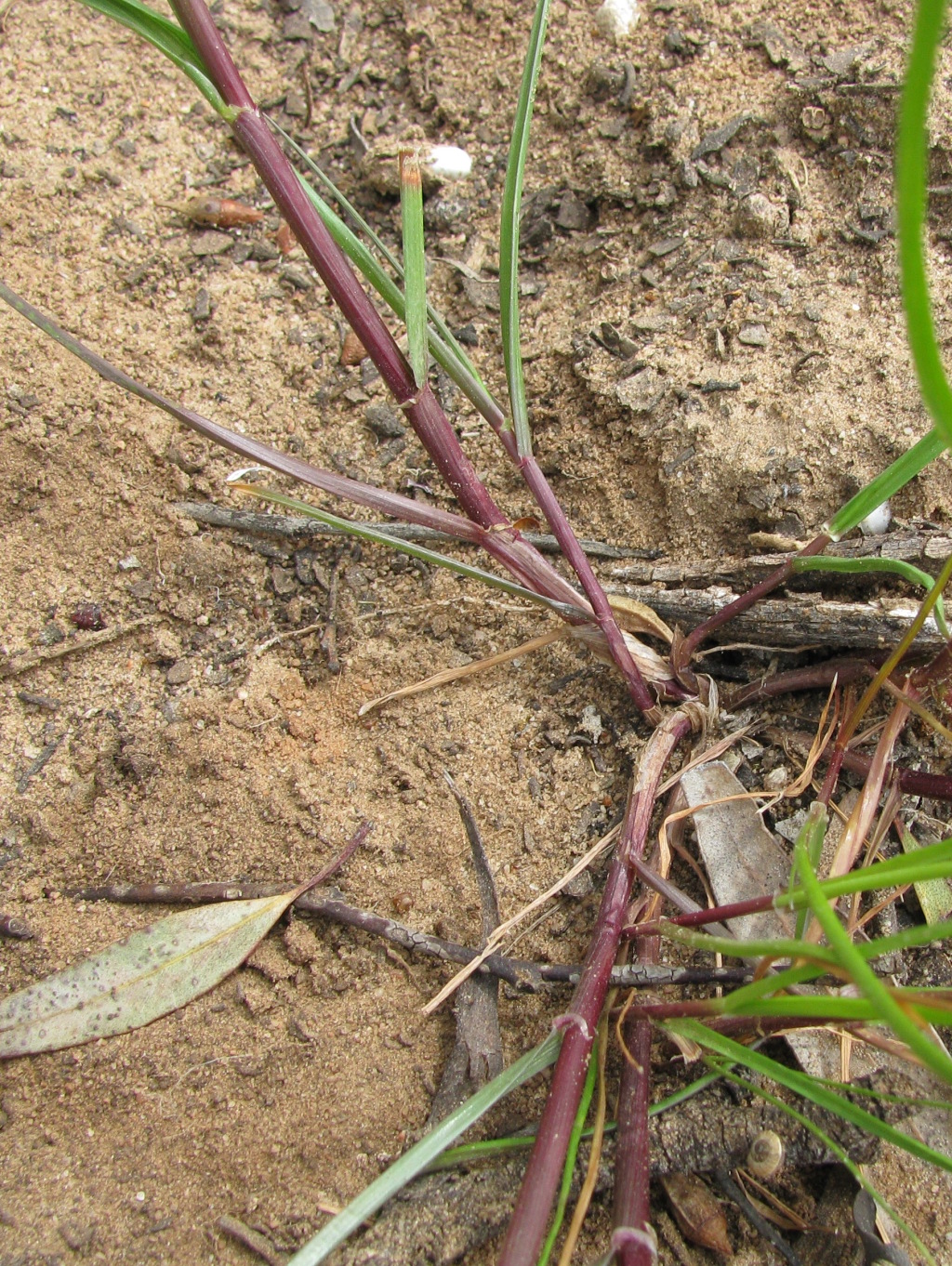Lolium rigidum
Gaudich. Wimmera Rye-grassTufted annual, culms erect, to 100 cm high; stems typically reddish, particularly about the nodes. Leaf-blades flat, convolute when young, to 20 cm long and 8 mm wide; ligules to 1.5 mm long; auricles usually inconspicuous or absent. Spike to 30 cm long; rachis mostly more than 1 mm (to 2 mm) diam. Spikelets 5–11-flowered, 4–18 mm long; glume stiff, mostly three-quarters as long as to slightly longer than the spikelet; lemma ovate to oblong-lanceolate, awnless or rarely with an awn to 3 mm long. Flowers Aug.–Dec.
LoM, MuM, Wim, GleP, VVP, VRiv, MSB, RobP, MuF, GipP, OtP, WaP, Gold, CVU, GGr, DunT, NIS, EGL, EGU, HSF, HNF, Strz. Naturalized in all States, also South America. Native to the Mediterranean area. Apart from the cooler and wetter parts of the State, widespread and common.
The common name was coined originally for a cultivar of the species selected for its success as a pasture grass under relatively dry, poor conditions, but the name has since commonly been applied to all strains of the species occurring in southern Australia.
Hybrids occur between L. rigidum and both L. perenne and L. multiflorum, the chief contributions of L. rigidum to the hybrid being typically a reddish pigmentation of the stem, a slightly longer than normal glume, and the annual life-form.
Walsh, N.G. (1994). Poaceae. In: Walsh, N.G.; Entwisle, T.J., Flora of Victoria Vol. 2, Ferns and Allied Plants, Conifers and Monocotyledons, pp. 356–627. Inkata Press, Melbourne.
 Spinning
Spinning




